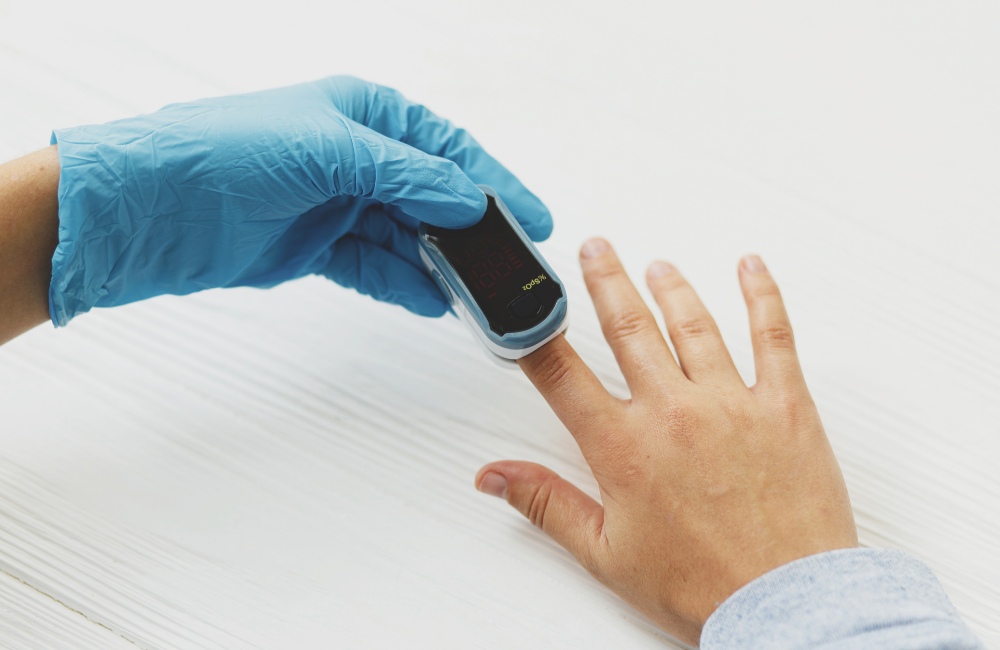
Understanding Low Oxygen Levels in COVID-19: When to Seek Help
Overview
Low oxygen levels, medically known as hypoxemia, can be a concerning aspect of COVID-19. Understanding what it is, how it affects the body, and when to seek help is crucial for managing this condition effectively. In this comprehensive guide, we’ll break down the topic, providing you with valuable insights and actionable information.
QUICK LINKS:
What it is
Hypoxemia, or low oxygen levels, occurs when there is an insufficient amount of oxygen in the blood to meet the body’s demands. In COVID-19, the virus primarily attacks the respiratory system, making it harder for the lungs to absorb oxygen, leading to reduced levels in the blood.
How it works
Imagine your body as a bustling city, and oxygen as the essential fuel that powers all activities. In COVID-19, the virus disrupts the normal functioning of the respiratory system, creating roadblocks in the process of oxygen absorption. It’s like a traffic jam on the road to your cells, leaving them gasping for energy.
Symptoms if any
Recognizing the symptoms of low oxygen levels is crucial. These may include:
- Shortness of breath, even at rest
- Rapid breathing or an increased heart rate
- Confusion or changes in mental alertness
- Bluish tint to the lips or skin
- Chest pain or tightness
If you or a loved one experience any of these symptoms, it’s essential to take action promptly.
How and when to get help
If you suspect low oxygen levels, it’s imperative to seek medical attention immediately. Contact your healthcare provider or go to the nearest hospital. They can perform tests like pulse oximetry to measure oxygen levels and determine the appropriate course of action.
Data Table and Explanation
| Oxygen Level (%) | Severity | Action Required |
|---|---|---|
| 95-100 | Normal | No immediate intervention |
| 91-94 | Mild Hypoxemia | Monitor, consider medical advice |
| 86-90 | Moderate Hypoxemia | Seek medical attention |
| Below 85 | Severe Hypoxemia | Immediate medical attention |
Understanding the severity levels helps you gauge the urgency of the situation and make informed decisions.
Historical Context
Throughout history, respiratory diseases have challenged humanity. From the Spanish flu to the H1N1 pandemic, understanding and managing low oxygen levels has been a critical aspect of healthcare. The lessons learned from the past continue to guide us in facing new challenges like COVID-19.
Other Factors
Several factors can exacerbate low oxygen levels, including pre-existing respiratory conditions, obesity, and smoking. It’s essential to address these factors to improve overall oxygenation and respiratory health.
Conclusion
In conclusion, recognizing and addressing low oxygen levels in COVID-19 is of paramount importance. By understanding the underlying mechanisms, symptoms, and appropriate actions, we can navigate this aspect of the virus more effectively. Remember, early intervention can make a significant difference in recovery.
FAQs
Yes, it’s possible to have low oxygen levels without noticeable symptoms, especially in the early stages.
Practicing deep breathing exercises and maintaining good posture can help improve oxygenation.
Yes, fatigue is a common symptom after experiencing low oxygen levels, as the body works harder to compensate.
Prolonged low oxygen levels can lead to organ damage, so seeking prompt medical attention is crucial.
Yes, maintaining a healthy diet, staying physically active, and avoiding smoking can contribute to better respiratory health.
Supplemental oxygen provides an extra source of oxygen to support the body when natural absorption is compromised.
Yes, low oxygen levels can be indicative of various medical conditions, not just COVID-19, so a thorough evaluation is important.
At higher altitudes, the air contains less oxygen, which can lead to lower oxygen levels in the blood.
Prolonged low oxygen levels can potentially lead to brain damage, underscoring the importance of timely intervention.
Older individuals may be more susceptible to low oxygen levels due to age-related changes in lung function.
